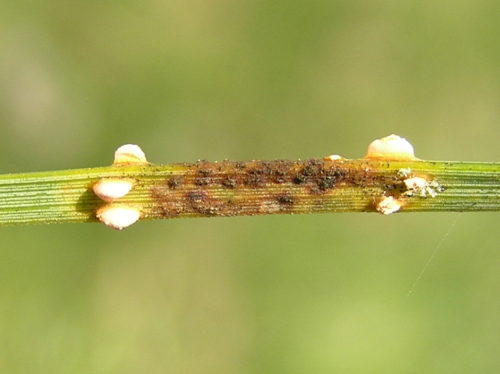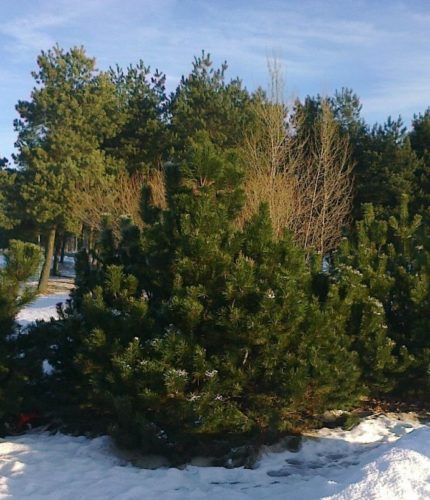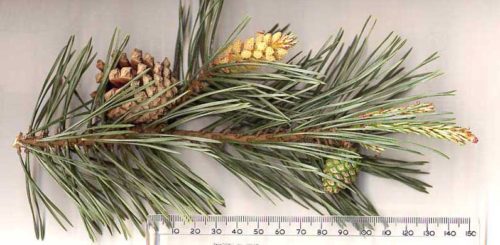Pine; a genus of conifers that has many species.
Also known as:
Deal tree
You are viewing the mobile-adapted version of the page.
The one for tablets, laptop and desktop also provides general information, such as origin, toxicity and cultivation.
Pine – (Pinus), a genus of conifers in the pine family (Pinaceae), which has many species. In pines, the needles are in groups of + 4 needles together. The pine is mainly found in the northern hemisphere, is evergreen and hardy. In colder regions, the pine is common because it is resistant to strong winds and frost and also tolerates poor soil.
Well-known pines are: the Scots Pine (Pinus Sylvestris), a large tree with blue-green needles and the Bog Pine (Pinus mugo) a wide-growing tree that can grow + 8 meters high over 3 meters wide. The Scots Pine can grow to a tree of over forty meter over the years; it can also grow very old.
Pines like fertile, slightly acidic soil, preferably dry to slightly moist. Pines also do well in poorer soils such as sandy soil. Position sun and semi-shade.
Pines tolerate pruning poorly. Pines are strong trees that have no problem with temporary high groundwater levels.
Bugs
Light green aphids with a woolly wax coating on the needles: see Overview aphids.
Fungi & diseases

Small vesicles form on the needles, which later produce orange spores: rust fungus (Coleosporium tussilaginis).
Other
Does not apply.


